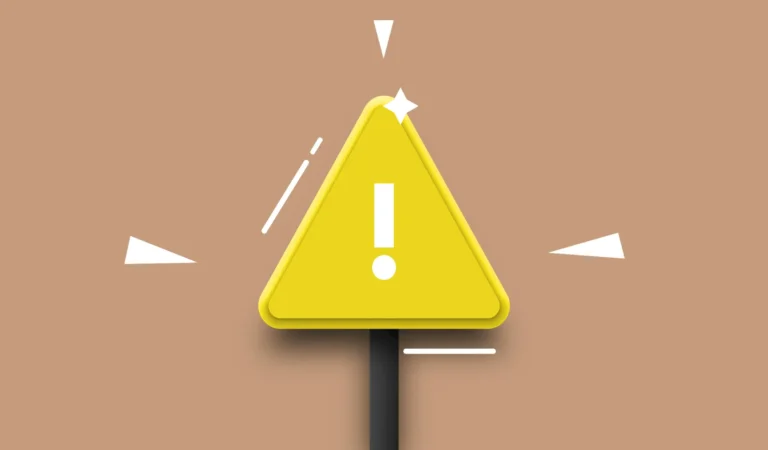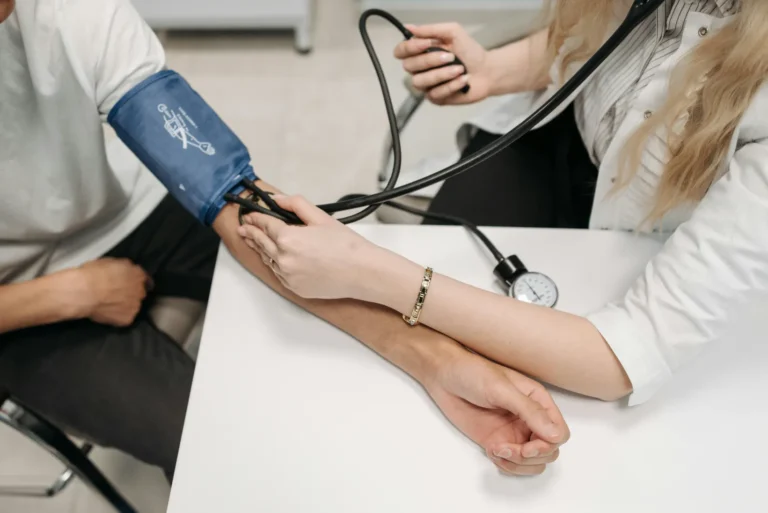Introduction
A Care Quality Commission (CQC) inspection plays a crucial role in ensuring that healthcare providers deliver high-quality care. These inspections assess whether practices meet regulatory standards across various domains such as safety, effectiveness, and patient care. A scheduled CQC inspection is an opportunity for healthcare providers to demonstrate their commitment to excellence.
Key takeaway: In this article, we will discuss essential strategies to help you effectively prepare for a scheduled CQC inspection and maintain compliance with regulatory standards in the healthcare industry. We will cover important areas that you need to focus on, including documentation management, staff training, patient feedback, and more. By following these guidelines, you can increase your chances of achieving a positive inspection outcome and delivering high-quality care to your patients.
A positive inspection outcome not only enhances your practice’s reputation but also contributes significantly to business growth by instilling confidence among patients and stakeholders. For more insights into maintaining high standards in healthcare compliance, visit Proactive Healthcare Stories. Should you have any queries or need further assistance, feel free to contact us.
1. Notifying and Gathering Documentation
The Importance of Promptly Acknowledging the Inspection Notification
Acknowledging the inspection notification promptly is crucial for setting a positive tone with the Care Quality Commission (CQC). It demonstrates your commitment to compliance and willingness to cooperate. Upon receiving the notification, the registered manager should immediately inform all relevant staff members. This ensures everyone is aware of the upcoming inspection and can begin preparations. Understanding the requirements stated in the notification is equally important. Each inspection notice will outline specific areas of focus, helping you tailor your preparation efforts effectively.
1.1 Actions to Take Upon Receiving the Inspection Announcement Letter
Designate a Staff Member Responsible for Coordinating Preparation Efforts
Assigning a dedicated staff member, often the registered manager, to oversee preparation efforts can streamline the entire process. This individual will act as a point of contact between your practice and the CQC inspectors. They should be familiar with all aspects of your service, ensuring no detail is overlooked.
Familiarise Yourself with the Inspection Process Outlined by CQC
Understanding what to expect during an inspection can significantly reduce stress and improve readiness. Familiarise yourself with the CQC’s guidelines and procedures, which are readily available on their website. Knowing what inspectors will be looking for allows you to focus your efforts on critical areas such as care quality, safety, and leadership.
1.2 Gathering and Organising Essential Documentation
Identify Key Documents That Need to Be in Place for the Inspection
Ensuring that all necessary documentation is readily available is a fundamental step in preparing for a CQC inspection. Key documents include:
- Policies and Protocols: These should cover all aspects of your service, from infection control to patient safety.
- Staff Records: Ensure that training records, qualifications, and DBS checks are up-to-date.
- Patient Records: These must be comprehensive and accurately reflect patient care.
- Health and Safety Documentation: Include risk assessments, fire safety checks, and maintenance logs.
Ensure Accuracy and Completeness Through Thorough Review Processes
The accuracy and completeness of your documentation are vital for demonstrating compliance with CQC standards. Implement a thorough review process involving multiple team members to cross-check information. Regular audits can help identify gaps or inaccuracies before they become issues during an inspection. Using checklists can also ensure no document is overlooked.
By focusing on these key actions—acknowledging notifications promptly, designating responsible staff, familiarising with CQC processes, identifying essential documents, and ensuring their accuracy—you lay a solid foundation for a successful CQC inspection.
2. Preparing the Practice Environment
Creating a Conducive Environment for a Successful Inspection Visit
Preparing the practice environment plays a pivotal role in ensuring a seamless CQC inspection. A well-organised and welcoming environment reflects the quality of care provided and sets a positive tone for inspectors. Begin by conducting a thorough walk-through of your facility to identify areas needing attention.
- Cleanliness: Ensure all areas, including waiting rooms, consultation rooms, and restrooms, are spotless.
- Signage: Clearly label all areas and ensure emergency exits are marked.
- Accessibility: Confirm that facilities meet accessibility standards for patients with disabilities.
Involving staff in this preparation helps instil a sense of collective responsibility and readiness.
Reviewing and Updating the Statement of Purpose to Align with CQC Requirements
The Statement of Purpose is a crucial document that outlines your practice’s aims, objectives, and the services you provide. Regularly updating it to reflect current operations ensures compliance with CQC standards.
Key Elements to Include:
- Service Details: Types of services provided, patient groups served.
- Aims and Objectives: Clearly defined goals aligned with regulatory requirements.
- Location Information: Accurate addresses of all service locations.
Reviewing this document periodically prevents discrepancies during inspections.
Implementing Effective Infection Control Measures and Maintaining Cleanliness Standards
Robust infection control measures are fundamental for patient safety and meeting CQC standards. Develop comprehensive protocols that address:
- Hand Hygiene: Availability of hand sanitisers, proper washing techniques.
- Personal Protective Equipment (PPE): Adequate supply and proper usage guidelines.
- Cleaning Procedures: Regular cleaning schedules for high-touch surfaces.
Staff training on these protocols ensures consistent implementation across the practice.
Ensuring Availability of Up-to-Date Health and Safety Documentation
Maintaining accurate health and safety documentation demonstrates your commitment to creating a safe environment for both patients and staff. Essential documents include:
- Risk Assessments: Detailed evaluations of potential hazards within the practice.
- Safety Policies: Comprehensive policies covering fire safety, first aid, manual handling etc.
- Maintenance Records: Logs detailing regular maintenance checks on equipment and facilities.
Regularly review these documents to ensure they are up-to-date and compliant with current regulations.
By methodically preparing each aspect of your practice environment, you not only align with CQC expectations but also foster an atmosphere that promotes high-quality care.
3. Staff Training and Development
Investing in Your Team’s Readiness for the Inspection
Preparing your staff for a CQC inspection is a critical aspect of compliance management. Your team is the backbone of your practice, and their readiness can significantly impact the outcome of the inspection.
- Communication: Ensure that all staff members are aware of the upcoming inspection and understand its importance.
- Role Clarity: Each team member should know their specific responsibilities during the inspection process.
- Mock Inspections: Conduct internal mock inspections to familiarise staff with what to expect.
These steps not only boost confidence but also ensure that everyone is prepared to showcase your practice’s strengths effectively.
Importance of Ongoing Staff Training in Meeting CQC Requirements
Ongoing training is essential for maintaining compliance with CQC standards. It ensures that staff are up-to-date with:
- Current best practices in patient care
- Regulatory changes
- New technologies and methodologies
Regular training sessions help in reinforcing knowledge and skills, making sure that compliance is a continuous process rather than a last-minute rush.
Developing Comprehensive Training Programs to Enhance Compliance Knowledge and Skills
Creating a structured training program tailored to your practice’s needs can make a significant difference. Key elements to include:
- Compliance Documents: Familiarise staff with essential compliance documents such as policies, procedures, and protocols.
- Interactive Sessions: Use role-playing scenarios and group discussions to engage staff actively.
- Assessment and Feedback: Regularly assess the training effectiveness through quizzes or practical assessments and provide constructive feedback.
A comprehensive program ensures that all team members have the necessary skills and knowledge to contribute to a successful inspection.
Establishing Whistleblowing Policies and Channels for Internal Reporting of Concerns
A transparent whistleblowing policy demonstrates your commitment to ethical practices and regulatory compliance. Important steps include:
- Policy Development: Develop clear policies outlining how staff can report concerns without fear of retribution.
- Training: Educate employees about these policies so they feel empowered to report issues.
- Channels: Establish multiple reporting channels (e.g., anonymous hotlines) to ensure accessibility.
Whistleblowing policies not only help in identifying potential compliance issues early but also foster a culture of openness and accountability within your practice.
By focusing on these aspects of staff training and development, you can create a well-prepared team ready for any CQC inspection. This proactive approach not only aids in achieving compliance but also enhances overall service quality, ultimately benefiting your patients and practice alike.
4. Patient Feedback and Complaints Management
Ensuring Patient-Centricity Through Effective Feedback Mechanisms and Complaint Resolution Practices
Patient-centric care is at the heart of CQC inspections. Establishing strong feedback systems ensures that the voices of your patients are heard, acknowledged, and acted upon. Effective feedback systems not only help with continuous improvement but also show inspectors that the practice values patient opinions.
Key Strategies:
- Implementing anonymous surveys to capture genuine patient sentiments.
- Setting up feedback boxes in accessible areas within the practice.
- Conducting post-visit phone interviews for more detailed insights.
A well-structured complaint resolution process is equally important. Dealing with complaints promptly shows a commitment to addressing concerns proactively. By recording each step of the investigation and outcome, practices can provide clear evidence during inspections.
Strategies for Gathering Meaningful Patient Feedback on Care Experience and Service Quality
Gathering meaningful patient feedback requires a multi-faceted approach:
- Surveys and QuestionnairesShort, focused surveys can be distributed electronically or on paper.
- Use a mix of closed-ended questions for quantitative data and open-ended questions for qualitative insights.
- Patient InterviewsFace-to-face or telephone interviews can provide deeper understanding.
- Consider training staff to conduct these interviews to ensure consistency.
- Focus GroupsGathering small groups of patients to discuss their experiences can highlight common themes.
- This method works best for understanding specific service areas or new initiatives.
Engaging with Diverse Population Groups to Understand and Address Their Specific Needs
Understanding and addressing the needs of diverse population groups is crucial in delivering fair care:
- Cultural Competence Training: Provide staff with training on cultural sensitivities and effective communication strategies.
- Language Services: Ensure availability of interpreters and translated materials for non-English speaking patients.
- Inclusive Feedback Methods: Use various channels like social media, community outreach programs, and partnership with local organizations to reach underrepresented groups.
Engagement with diverse populations should be ongoing, ensuring all patient voices are included in the feedback loop.
Establishing a Robust Complaints Management System to Investigate and Resolve Issues in a Timely Manner
A robust complaints management system should include the following elements:
- Clear Policies and ProceduresDevelop clear guidelines on how complaints are handled from receipt to resolution.
- Ensure these policies are easily accessible to both patients and staff.
- Training StaffEquip staff with the skills needed to handle complaints effectively.
- Regular training sessions on empathy, active listening, and problem-solving.
- DocumentationMaintain comprehensive records of all complaints received, investigations conducted, actions taken, and resolutions achieved.
- Use this documentation as evidence during CQC inspections to demonstrate due diligence.
- Feedback LoopInform complainants about the outcomes of their complaints.
- Use insights from complaints to drive improvements within the practice.
By integrating these strategies into daily operations, practices can create a patient-centric environment that meets CQC standards while continuously improving service quality.
5. Practice Walkthrough and Inspection Process
Familiarising Yourself with the Journey: From Arrival to Departure of the CQC Inspectors
Understanding the inspection process is crucial for a smooth experience on the day of the CQC visit. The journey begins when inspectors arrive at your practice and ends when they depart, but there are several key moments in between.
- Arrival: Inspectors introduce themselves and explain what will happen during the visit.
- Initial Assessment: Inspectors may want to see specific areas right away or take a general tour.
- Staff Guidance: A designated staff member should be ready to show inspectors around, answer questions, and provide documents.
- On-Site Activities: Inspectors will interact with staff and patients, observing care practices and reviewing records.
- Departure: Inspectors wrap up their visit and may share initial feedback.
During their time on-site, inspectors will interact with both staff and patients. Ensuring that everyone is aware of their roles and responsibilities during this period can create a more seamless experience. Remember, inspectors are not just evaluating compliance; they are also gauging the overall atmosphere and how comfortable patients feel.
Overview of the Different Stages in a Typical Inspection Process
The inspection process can be broken down into several distinct stages:
- Pre-Inspection Planning: Prior to their visit, inspectors will have reviewed your practice’s history, any previous inspection reports, and feedback from patients.
- Initial Meeting: Upon arrival, a brief meeting will outline the day’s agenda.
- On-Site Assessment: This includes observing care practices, reviewing records, interviewing staff and patients, and inspecting facilities.
- Feedback Session: At the end of their visit, inspectors will usually provide preliminary feedback on their findings.
- Post-Inspection Reporting: A detailed report is compiled post-inspection summarising findings and providing ratings.
Throughout these stages, maintaining open communication with the inspection team is vital. Providing accompanying information promptly ensures that the process remains efficient.
Key Areas of Focus During Inspections: Care Quality, Safety, Leadership, and Responsiveness to People’s Needs
CQC inspections focus on several critical areas:
- Care Quality: Inspectors evaluate whether care provided meets expected standards. This includes assessing patient outcomes and satisfaction levels.
- Safety: Ensuring that safety protocols are in place is paramount. This includes infection control measures and emergency preparedness plans.
- Leadership: Effective leadership is scrutinised to ensure that there are clear lines of responsibility and strong governance structures in place.
- Responsiveness to People’s Needs: Inspectors look at how well your practice responds to patient needs – including accessibility of services and patient engagement strategies.
Each area requires comprehensive preparedness. For instance:
- Care Quality: Demonstrate through patient records how care plans are being followed and outcomes monitored.
- Safety: Ensure all health & safety documentation is up-to-date and accessible.
- Leadership: Prepare evidence of continuous professional development for leadership teams.
- Responsiveness: Show how patient feedback has led to service improvements.
By focusing on these areas diligently, you can present a robust case for compliance during inspections.
6. Demonstrating Compliance and Quality of Care
Proving Your Commitment to Excellence Through Strong Evidences
Establishing a practice’s commitment to excellence is foundational during a CQC inspection. Evidence gathering must be meticulous, ensuring all aspects of care are documented and aligned with CQC requirements for inspection. Evidence should reflect not only compliance but also the quality and consistency of care provided.
- Clinical Records: These must be comprehensive, accurate, and up-to-date. They should cover patient assessments, treatment plans, and follow-up notes.
- Staff Training Logs: Documenting continuous professional development activities demonstrates an ongoing commitment to maintaining high standards.
- Incident Reports: A transparent system for reporting and resolving incidents showcases a culture of safety and improvement.
The evidence should tell the story of the practice’s dedication to maintaining an environment where patients receive safe, effective, and compassionate care. Each piece of documentation serves as proof that the practice meets and exceeds regulatory expectations.
Strategies for Effectively Showcasing Compliance with CQC Standards
To effectively showcase compliance with CQC standards, practices can employ several strategies:
- Audit Trails: Regular internal audits help in identifying areas of non-compliance before they become issues during an inspection. These audits should cover clinical processes, administrative functions, and patient interactions.
- Outcome Measures: Collecting data on outcomes such as patient satisfaction scores, treatment success rates, and incident resolution times provides tangible evidence of quality care.
- Policy Reviews: Regularly reviewing and updating policies ensures they remain relevant and compliant with current regulations.
Using these strategies enables practices to present a clear narrative of their operational integrity and excellence. For instance, an audit trail can highlight improvements made over time in response to previous inspections or internal reviews.
The Role of Technology in Facilitating Evidence Management Processes
Technology plays a crucial role in streamlining evidence management processes:
- Electronic Health Records (EHRs): EHR systems allow for easy access to patient records, ensuring data accuracy and facilitating quick retrieval during inspections.
- Compliance Software: Dedicated compliance management tools can automate policy updates, track training completions, and monitor adherence to protocols.
- Data Analytics Tools: Leveraging analytics helps in identifying trends, forecasting potential issues, and generating reports that provide insights into practice performance.
For example, an EHR system not only maintains comprehensive patient records but also integrates with other systems to ensure seamless information flow across departments. Compliance software might alert when a policy review is due or when staff need refresher training on specific protocols.
By integrating these technologies into daily operations, practices enhance their ability to manage evidence efficiently, maintain high standards of care, and demonstrate compliance effectively during CQC inspections.
Conclusion
Approaching a CQC inspection with thorough preparation is essential for demonstrating compliance and ensuring high-quality care. By focusing on key areas such as documentation management, staff training, practice environment, patient feedback, and showcasing evidence of compliance, you position your healthcare practice for success.
Key Takeaways:
- Proactive Documentation: Keep all policies, protocols, and records well-organised and up-to-date.
- Staff Readiness: Invest in continuous staff training to align with CQC standards.
- Patient-Centric Practices: Implement robust feedback mechanisms and address complaints effectively.
- Inspection Familiarity: Understand the inspection process and prepare the practice environment accordingly.
- Evidence of Quality Care: Use audit trails and technology to showcase compliance and quality.
By adhering to these strategies, healthcare providers can achieve positive inspection outcomes. This not only enhances the practice’s reputation but also contributes to sustained business growth. Preparation for a CQC inspection is not just about meeting regulatory requirements; it is about committing to excellence in patient care.




